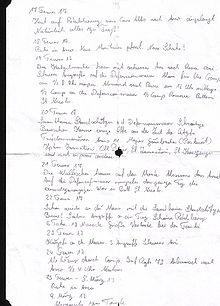Blocking group Ponale
The blocking group Ponale belonged to the Riva fortress and thus to the system of Austrian fortifications on the border with Italy . It consisted of three small fortifications: the Bellavista battery (also known as the beach battery), the Ponale road block and the so-called defensive wall.
Battery (beach battery) Bellavista
This was a concrete battery block built in 1909 with caverns driven into the rock. The armament consisted of four 9 cm casemate cannons M 75/96 in center pivot mounts and two searchlights. The task was to sweep the lake area from Limone in the south to Torbole in the east. The hillside road into the Ledro Valley, however, lay in the battery's blind spot and could not be reached by its gunfire.
The battery is located directly on the western shore of the lake at the exit of Riva del Garda below the road to Limone. The building is completely intact and is now used as a restaurant.
(Coordinate: 45 ° 52 ′ 53 ″ N , 10 ° 50 ′ 18 ″ O )
Roadblock Ponale
On the (old) road to the Ledro valley below Monte di Riva, plans for the construction of a road block were presented in 1897. Construction began in 1904; initially it was only a small complex that was expanded into an underground fortress, especially during the First World War. Initially armed only with M 93 machine guns, during the war the lock had two cavern batteries, which were equipped with a total of four 8 cm rapid-fire cannons, as well as cavernous machine gun stands and rifle galleries. The lock was not involved in any combat operations.
Since the dam is mostly underground, there is little evidence of the actual size of the facility today, especially since the tunnels are not accessible.
(Coordinate: 45 ° 52 ′ 20.6 ″ N , 10 ° 50 ′ 14.1 ″ E )
Defensive wall
In 1915, an infantry work was built above the (old) road to the Ledro Valley as an additional safeguard for the Ponale road block, which was known as the defensive wall. The facility sat below the Cima Capi and dominated the exit of the Val di Ledro to Lake Garda as well as the road leading into the valley, which makes a sharp right curve here and leads uphill in three hairpin bends immediately below the position.
Fiercely fought throughout the war, the defensive wall proved to be an insurmountable obstacle for the Italian attackers.
After days of heavy artillery bombardment, the Italians massively attacked the barrier on April 16, 1916. Only after three days of uninterrupted, loss-making attacks could the defensive wall be captured on the evening of April 19 against ten defenders still alive. During the fighting, the Austrians (including Standschützen from Sarnthein ) had started to set up a reserve position about 50 meters back. This second defense wall withstood all attacks until the end of the war.
There are no visible remains of the defensive wall.
(Coordinate: 45 ° 51 ′ 49 ″ N , 10 ° 49 ′ 53 ″ O )
Individual evidence
- ↑ It was a field fortification - the defensive wall is therefore not to be taken literally.
literature
- Erwin Anton Grestenberger: Imperial and Royal fortifications in Tyrol and Carinthia 1860–1918 . Verlag Österreich ua, Vienna 2000, ISBN 3-8132-0747-1 .
- Wilhelm Nussstein: Dolomites. Austrian fortresses in Northern Italy. From the seven municipalities to the Flitscher Klause . Mittler, Hamburg et al. 1997, ISBN 3-8132-0496-0 , ( military history travel guide ).
- Vienna War Archives


